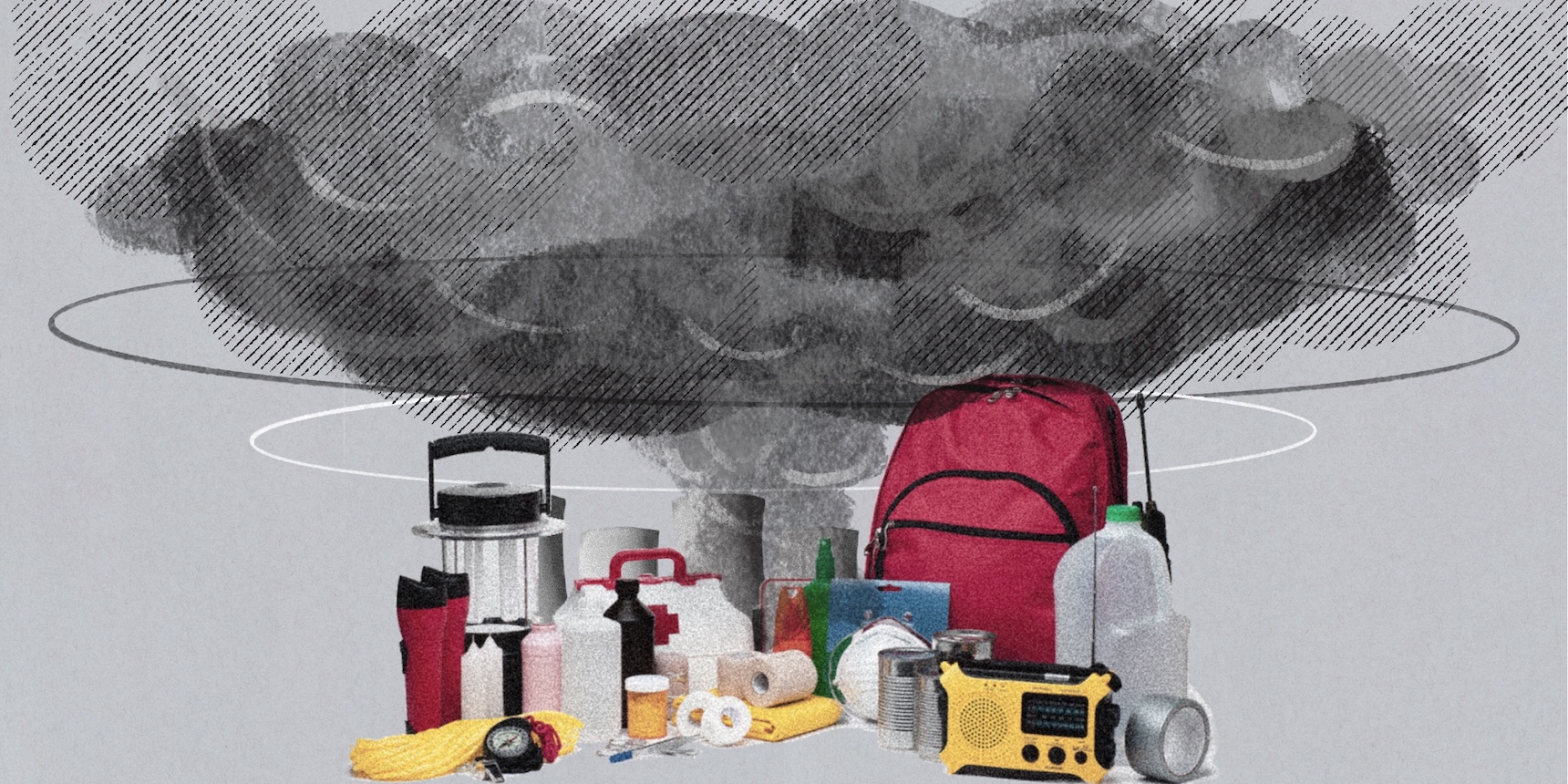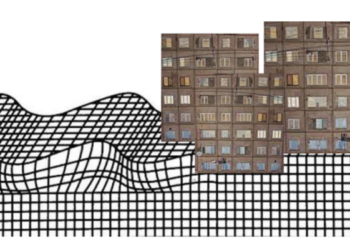
Armenia was among only four Soviet Republics that had nuclear power along with Russia, Ukraine and Lithuania. When the Metsamor Nuclear Power Plant (NPP) in Armenia became operational in 1976, it was considered controversial given the high seismic activity in the region. To this day, the Metsamor NPP is considered high risk. The EU has been pushing Armenia to shut down the power plant, but Armenian authorities intend to build yet another one with the financial and technical assistance from Russia. One way or another, the Armenian public will have to be reliant on a NPP for some time and in this light it is important to know how prepared Armenia is to face a potential nuclear disaster.
The world has seen three nuclear accidents: the 1979 Three Mile Island accident in the United States, the 1986 Chernobyl disaster in the Soviet Union, and the 2011 Fukushima Daiichi accident in Japan. While the disasters at Three Mile Island and Chernobyl resulted from malfunction and human error, the Fukushima accident was the result of a natural disaster –– the Tohoku Earthquake. The Armenian NPP is also at risk from an earthquake as Armenia is in an active seismic zone, although its reactor was built to withstand a magnitude 7.0 earthquake. It is not widely known, but the Metsamor NPP in Armenia caught fire on October 15, 1982 but given the nature of the Soviet Union, news of the accident was suppressed. The power plant staff and firefighters extinguished the fire before it grew into a more serious disaster. Some of the same firefighters were later called to assist during the Chernobyl disaster.
Disaster Response Preparedness in Armenia
Armenia’s disaster response capabilities were tested on August 14, 2022, when a warehouse storing four tons of flammable material exploded at the Surmalu Market in the center of Yerevan, leaving 16 dead and over 60 injured. Armine Hayrapetyan, who works on implementation of the SENDAI Framework at Armenia’s Ministry of Emergency Situations (MES), says it is difficult to evaluate how well prepared an actual rescue force is until a disaster happens. The SENDAI framework for disaster risk reduction (2015-2030) is an international framework adopted by the UN member states to reduce, prevent and respond to disaster risks across the globe. “As sad and bad as it sounds, rescuers test their skills and learn during actual disasters,” Hayrapetyan explains. At the time of the accident in Surmalu, many problems became apparent such as the cooperation between rescue forces and the police. According to Hayrapetyan the police could have done a better job in securing the vicinity of the accident, as often the public hindered the work of the rescuers.
Hayrapetyan states that the first step that the Armenian Government took toward reforming the disaster response system was strengthening legislation that defined the functions and responsibilities of all stakeholders involved in disaster risk reduction and response. Without the necessary laws that would enforce real steps from the government and other stakeholders it will be impossible to adequately implement the SENDAI framework priorities and recommendations, she says.
Hayrapetyan also noted that the Surmalu accident allowed for greater understanding of the gaps in Armenia’s disaster response capacity. She added that the MES takes seriously the lessons learned from that tragic accident. Hayrapetyan noted that after Surmalu new training courses were established for rescue teams, while simultaneously, there is greater acknowledgment that more tools and knowledge to conduct further training are needed. She pointed out that rescue operations could be more effective if GIS maps of rescue sites were available.
Armenia recently requalified for the INSARAG (International Search and Rescue Advisory Group) rescue advisory international team. In 2022, Armenia passed its first requalification since it became a full member in 2015 when its rescue team was classified as a medium search and urban rescue team. This means that Armenia can both accept international assistance in case of a major emergency at home, and it can also provide help to international partners. Armenia has one international rescue team. Four other teams have also been trained according to these standards to carry out rescue operations within Armenia. Hayrapetyan stated that Armenia is taking measures to be ready to respond to a major disaster, mostly earthquakes.
The Armenian Government is also working to increase the number of volunteer rescue groups based on international practice which will provide additional support in times of disasters. Volunteers will be trained and certified in cooperation with international partners. Hayrapetyan noted that during the Surmalu disaster, many bystanders rushed to help, but this can create more hazards both for rescuers and for themselves without proper training in rescue operations.
Disaster Response During a Nuclear Emergency
The Fukushima accident is a good case to understand what can go wrong during a nuclear disaster response. A detailed analysis of the Fukushima accident revealed a number of problems with the government’s response to the disaster, among them cooperation across different state institutions. According to Nikolay Grigoryan, former deputy head of the MES rescue services, the Fukushima accident has been analyzed by Armenian authorities and lessons have been drawn to better prepare should there be a nuclear disaster.
Under the MES’s Department for Disaster Risk Reduction and Civil Protection there are special teams of rescue forces and first responders for Chemical, Biological, Radiological, Nuclear and Ecological (CBRNE) disasters. According to Hayrapetyan, all of these divisions receive training in their specialized areas. For instance, the CBRNE division is acquiring more and more new technologies and tracks to cooperate with international partners. The CBRNE rescue teams also held training sessions on CBRNE tasks with new equipment. During the training, rescuers enact worst-case scenarios to improve their level of preparedness. The Metsamor NPP also has a separate, dedicated group of rescuers attached to the power plant and is categorized as a special division of the overall MES rescue forces.
With a 2005 Government Decision (amended in 2018), the National Plan for the Protection of the Population in the Event of a Nuclear and (or) Radioactive Accident of the Armenian Nuclear Power Plant was adopted. The Plan prescribes the actions of all relevant ministries and government bodies in the case of a nuclear or radiological disaster. The activities of the governors of the Armavir, Aragatsotn, Shirak and Kotayk regions, which are closest to the power plant, are also tasked with specific obligations in the Plan. The governors of the first two regions must provide for the security of the population while the governors of the last two regions must coordinate the needs of people displaced from the Armavir and Aragatsotn regions. The Plan also establishes protocols for the protection of the population in the case of a nuclear accident. This responsibility falls on community heads of the towns and villages closest to the Metsamor NPP. The protocols of each community are outlined in the Plan according to their proximity to the plant.
Measures include the distribution of stable iodine which protects the thyroid gland from radiation to people closest to a nuclear or radiological disaster. According to the Plan, a predetermined amount of stable iodine must be distributed to residents in those communities, as well as to the heads of institutions and commercial organizations according to the number of employees as a precautionary measure.
Armenia’s Health Ministry states that in the case of an accident, regional medical institutions will distribute stable iodine, while the provision of medicine is carried out through the health and social affairs departments of the Armavir and Aragatsotn regions.
When asked when stable iodine was last distributed to the public and institutions and commercial organizations, the Ministry of Health replied that the State Reserves Office of Armenia’s MES is responsible for the purchase of stable iodine, so it would be appropriate to address the question to them. The Ministry of Emergency Situations in turn stated that the Health Ministry is responsible for distributing stable iodine tablets to the public. In September 2022, the Health Ministry told Ecolur that they calculated the required amount of stable iodine in the affected zones of the NPP, but did not distribute them. Thus, at this stage it is not known whether communities close to the plant have the necessary amount of stable iodine in case of an emergency.
Private houses and apartments as well as the first floors and basements of residential buildings are designated as fallout shelters for people near the power plant, but they must be adapted before an accident happens. Many such shelters, especially the basements of highrise buildings are currently either being used for commercial purposes or are in no condition to be used as a shelter. The MES said that they conduct regular visits to the shelters and notify the authorities if something needs to be fixed.
In the case of an accident, communities near Metsamor will be informed through the radiation danger siren issued by the NPP. Upon hearing this siren people should ingest stable iodine and take shelter. Information about leaving shelters and the rules of conduct in a radioactive zone is communicated to the population through television and radio.
Armine Hayrapetyan says that looking back at past nuclear disasters such as the Chernobyl accident and the Fukushima Daicihii disaster show that no one can be fully prepared for such accidents. The most effective way to prepare for a nuclear disaster is to ensure it never happens or to mitigate risks to the greatest possible extent, she says. For this, she places great value on the assistance of the international community, especially in terms of sharing experience, practice, technology, as well as in acquiring better equipment and testing competencies. Hayrapetyan says nuclear disaster preparedness is an area where Armenia cannot progress in isolation, adding that in all spheres of disaster response and management, the country must be open to accepting new ideas and technology, international assistance as well as participating in international training.
On January 1, 2023, Armenia’s MES was dissolved and its functions transferred to the newly created Ministry of Internal Affairs. The MES stated that after the new ministry becomes fully functional, it will again revise the National Plan for the Protection of the Population in the Event of a Nuclear and (or) Radioactive Accident of the Metsamor Nuclear Power Plant.
Also see
The Nuclear Option
Armenia’s Nuclear Power Plant in Metsamor is vital for Armenia’s energy security; it also poses dangers that are often overlooked. While the focus has been its location, less public scrutiny has been paid to its ongoing environmental impact.
Read moreStruggling to Breathe: Public Transportation and the Air Pollution Crisis
The vast majority of air pollution in Armenian cities is from transport emissions, and both the concentration and quantity of automobiles in Yerevan prevent residents from living in an environment with clean air.
Read moreEmergency Medical Care: How Anticipating Catastrophe Makes a Difference
Armenia is now in a teachable moment. It is time to double down on disaster preparedness and emergency care development by taking proactive measures and moving from reaction to prevention and mitigation.
Read moreFixing the Cracks: Building in an Earthquake Zone
A 4.7 magnitude earthquake rattled Yerevan back in February. Although it didn’t cause significant harm to people or structures, it triggered the inescapable question: Can Armenia withstand another major earthquake?
Read more







